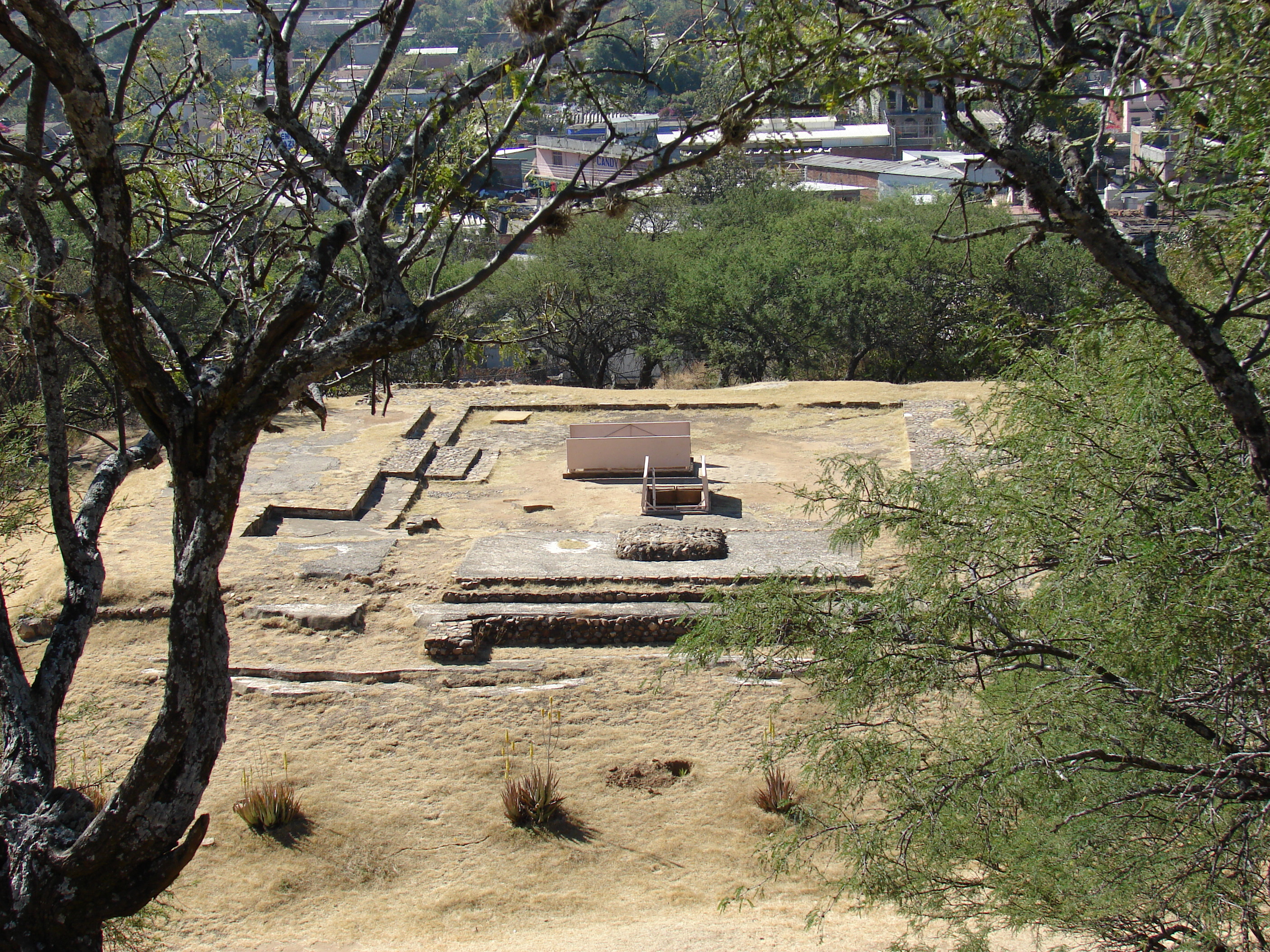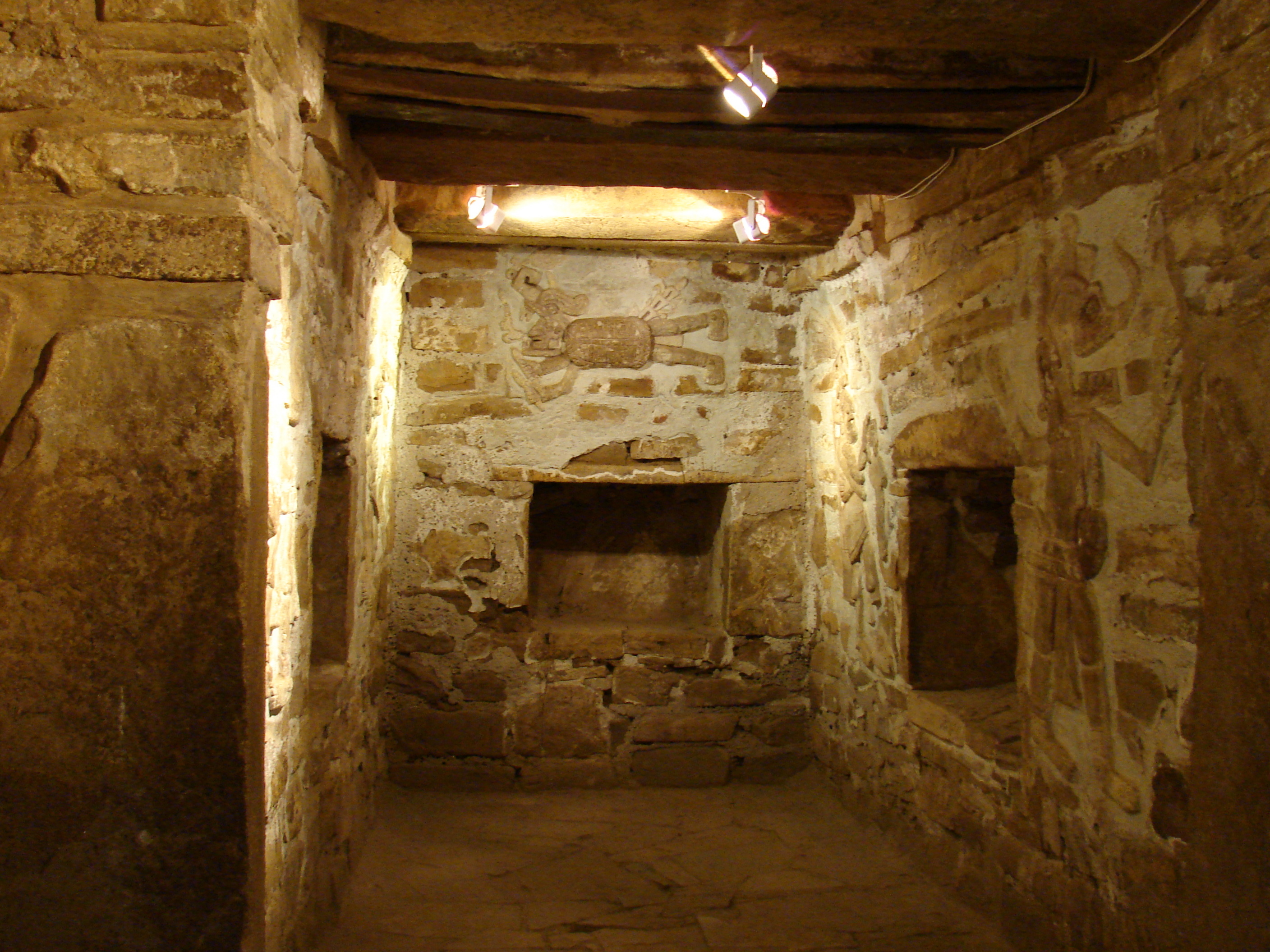Zaachila on:
[Wikipedia]
[Google]
[Amazon]


 Zaachila (the Zapotec name;
Zaachila (the Zapotec name;
 Zaachila (the Zapotec name;
Zaachila (the Zapotec name; Nahuatl
Nahuatl (; ), Aztec, or Mexicano is a language or, by some definitions, a group of languages of the Uto-Aztecan language family. Varieties of Nahuatl are spoken by about Nahua peoples, most of whom live mainly in Central Mexico and have small ...
: ''Teotzapotlan''; Mixtec
The Mixtecs (), or Mixtecos, are indigenous Mesoamerican peoples of Mexico inhabiting the region known as La Mixteca of Oaxaca and Puebla as well as La Montaña Region and Costa Chica Regions of the state of Guerrero. The Mixtec Cult ...
: ''Ñuhu Tocuisi'') was a powerful Mesoamerican city in what is now Oaxaca
Oaxaca ( , also , , from nci, Huāxyacac ), officially the Free and Sovereign State of Oaxaca ( es, Estado Libre y Soberano de Oaxaca), is one of the 32 states that compose the Federative Entities of Mexico. It is divided into 570 municipaliti ...
, Mexico
Mexico (Spanish language, Spanish: México), officially the United Mexican States, is a List of sovereign states, country in the southern portion of North America. It is borders of Mexico, bordered to the north by the United States; to the so ...
, from the city of Oaxaca
Oaxaca ( , also , , from nci, Huāxyacac ), officially the Free and Sovereign State of Oaxaca ( es, Estado Libre y Soberano de Oaxaca), is one of the 32 states that compose the Federative Entities of Mexico. It is divided into 570 municipaliti ...
. The city is named after Zaachila Yoo, the Zapotec ruler, in the late 14th and early 15th century. Zaachila was home of Donaji- the last Zapotec princess. Zaachila is now an archaeological site. A large unexplored pyramid mound is in the center in which two tombs were discovered in 1962. These tombs are thought to belong to important Mixtec
The Mixtecs (), or Mixtecos, are indigenous Mesoamerican peoples of Mexico inhabiting the region known as La Mixteca of Oaxaca and Puebla as well as La Montaña Region and Costa Chica Regions of the state of Guerrero. The Mixtec Cult ...
persons.
Following the fall of Monte Alban, Zaachila became the last Zapotec capital. Sometime before the arrival of the Spaniards, the capital was conquered by the Mixtecs. The history of the pre-Hispanic city is unclear. One theory is that the site flourished 1100 and 1521 AD. Another theory is that the city was founded in 1399 and could be compared to Tenochtitlan
, ; es, Tenochtitlan also known as Mexico-Tenochtitlan, ; es, México-Tenochtitlan was a large Mexican in what is now the historic center of Mexico City. The exact date of the founding of the city is unclear. The date 13 March 1325 was ...
, as it was a city in the middle of a lake. The full extent of the ancient city is not known either, principally because excavation is impeded by the fact that most mounds have inhabited structures on them.
In 1971 new excavations found two more tombs registered with the numbers 3 and 4. Even though the offerings were simpler than the ones found by Gallegos, tomb 4 end up being of special interest because of the paint remains found on its lintel. Unfortunately, tree roots and rain infiltration have damaged the designs, according to Acosta (1972) they represent skulls and cross bones over a red colored background. Since 1990 the project "La pintura mural prehispánica en México" of the Institute of Aesthetic Research of the National Autonomous University of Mexico
The National Autonomous University of Mexico ( es, Universidad Nacional Autónoma de México, UNAM) is a public research university in Mexico. It is consistently ranked as one of the best universities in Latin America, where it's also the bigges ...
, it is dedicated to record and study of the pre-Columbian murals, like those from Zaachila.
Due population growth and neglect of the authorities a housing project was authorized which has add up to the damage and pillaging of this valuable archaeological site.
Nowadays, in this community barter is a common practice, every Thursday many merchants came to this place to exchange and sell their products.
The big festival of the Zaachila hill , Laanii Roo Xten Daan Zaadxil
The last Monday of July, the Zaachila community meets in the archaeological site, better known as "el cerrito," to honor the Corn Goddess (Pitao Ko Shuub), in traditional Laanii Roo Xten Daan Zaadxil. The Goddess Pitao Ko Shuub is chosen among several young women who previously enrolled in a contest, the main demanded features are: the long black hair, they must have brown skin and share a theme of the history of Zaachila. The chosen one will be host of all the activities of the festival. Has the young women, the ten neighborhoods that conform the town organize months before the festival to represent the most iconic dances of various regions of Oaxaca, like: "La Flor de la Piña de Tuxtepec (the pineapple flower of Tuxtepec)," "El Jarabe de Ejutla," "Las Chilenas de la Costa," "El Jarabe Mixe," "Los Bailes del Itsmo de Tehuantepec," and has a central valley special input we found the "Dance of the Feather" and "Los Zancudos," this last one is performed by young men on stilts almost five feet tall. In this festivity the ejidal authorities get involved, and they are in charge of giving to the participants tepache (a fruitfermented beverage
This is a list of fermented foods, which are foods produced or preserved by the action of microorganisms. In this context, fermentation typically refers to the fermentation of sugar to alcohol using yeast, but other fermentation processes involv ...
), mezcal, atole and tamales.
This festival is one of the most colorful and joyful of the region because in this festival cultural events, calendas, parades, culinary samples and other events are celebrated too.
Climate
See also
*Zapotec civilization
The Zapotec civilization ( "The People"; 700 BC–1521 AD) was an indigenous pre-Columbian civilization that flourished in the Valley of Oaxaca in Mesoamerica. Archaeological evidence shows that their culture originated at least 2,500 years ...
References
{{Coord, 16, 57, 0, N, 96, 45, 0, W, type:city_region:MX_source:nlwiki, display=title Zapotec sites Former populated places in Mexico Archaeological sites in Oaxaca 1962 archaeological discoveries